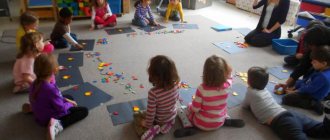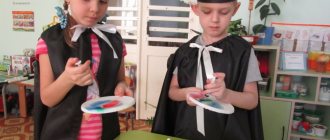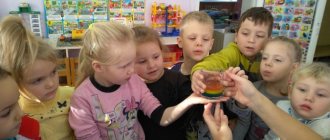Means of understanding the world around us
Cognitive and research activities of preschool children are based on observation. The child enjoys watching the experiences of the teacher in kindergarten or the parents at home. They may also be interested in observing nature and its phenomena, such as the growth of trees and shrubs and the study of leaves and fruits.
Also, cognitive-research activities in the 2nd junior group are associated with actions and objects. In order to study an object, its purpose and properties, the child performs various manipulations with it.
By using the primary means of understanding the world around us, the child develops all aspects of his personality, and an interest and desire arises to learn about the world around him. The child begins to realize the uniqueness of life even in its most wonderful manifestations. During cognitive and research activities of preschool children, the need to preserve, respect and protect nature is brought up.
Features of the classes
Cognitive and research activities in the 2nd junior group involve conducting classes with children. However, there are changes in their structure. Just like other program classes, it has specific objectives. Very often the actions that must be carried out during the lesson are also prescribed.
The stages of research involve taking turns performing the actions prescribed in the tasks. Tasks of this type are not carried out every day, since they are aimed at long-term study of the topic. They record the results of the children’s work and their further actions.
If we compare these classes with ordinary frontal or subgroup planned classes, we will notice that the summary is much shorter; it does not trace the main structural components of the organizational moment, the main and final parts. However, a prolonged focus can be noted throughout the day. If a planned lesson lasts a maximum of 45 minutes, then classes on cognitive and research activities in the 2nd junior group are monitored at scheduled moments throughout the day.





